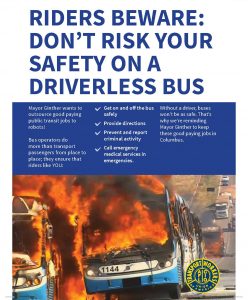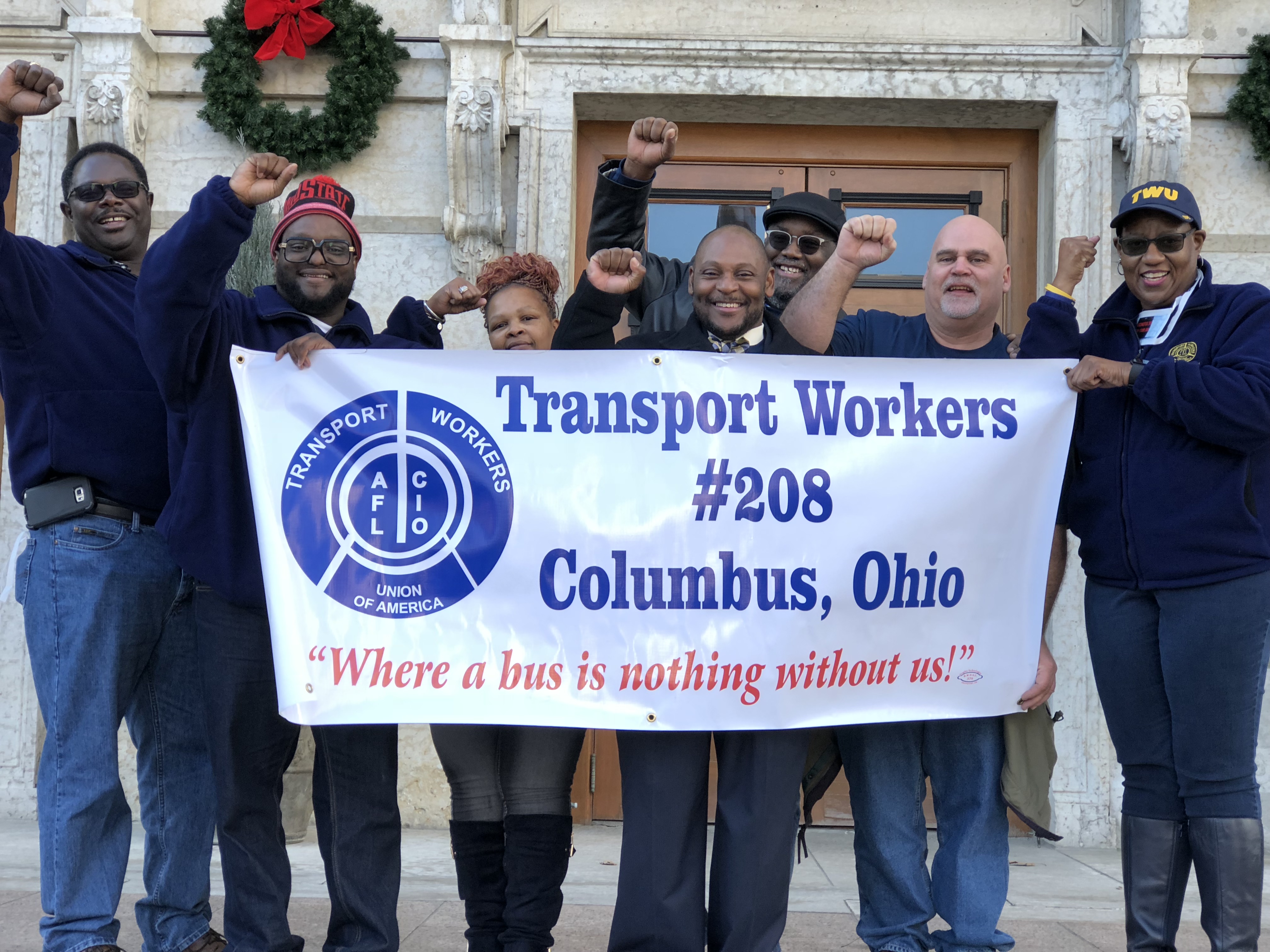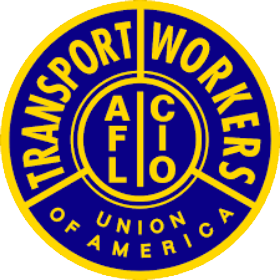 When Columbus, Ohio was awarded the U.S. Department of Transportation SMART city challenge grant last year, local elected officials talked about bringing the city into the 21st century by introducing cutting-edge technology into the transportation sector which would be led by a group called SMART Columbus– but no one thought they would want to eliminate Bus Operators. SMART Columbus plan called for a pilot project in which six autonomous shuttles would be tested in Downtown Columbus covering the first and last mile runs.
When Columbus, Ohio was awarded the U.S. Department of Transportation SMART city challenge grant last year, local elected officials talked about bringing the city into the 21st century by introducing cutting-edge technology into the transportation sector which would be led by a group called SMART Columbus– but no one thought they would want to eliminate Bus Operators. SMART Columbus plan called for a pilot project in which six autonomous shuttles would be tested in Downtown Columbus covering the first and last mile runs.
The TWU International and the executive board of Local 208, “where a bus is nothing without us,” quickly sprang into action, launching a sophisticated, multi-pronged, strategic fight back campaign. Local 208 worked closely with International staff on developing a campaign plan that would involve member-to- member education, informational leaflets for members and riders, Local 208 newsletters, social media updates, campaign text blasts and published op-eds warning the public on the dangers of riding on a driver-less bus.
member education, informational leaflets for members and riders, Local 208 newsletters, social media updates, campaign text blasts and published op-eds warning the public on the dangers of riding on a driver-less bus.
First of Many Battles
On June 11, the fruits of our organizing paid dividends when TWU Local 208 came out victorious in the first phase of the TWU’s major battle against autonomous vehicles. Due to political action and member to member organizing, the Columbus City Council passed a historic resolution supporting our membership which stated TWU Bus Operators should remain on board – and not be replaced by computers.
Dozens of Columbus Bus Operators and supporters filled the room, alongside TWU officers from Washington DC, New York City, Long Island, Miami and beyond. The council chambers erupted into cheers when the resolution was unanimously approved.
The resolution states that “smart technology is designed to uplift people and workers, not replace them.” It goes on to say that the city of Columbus can embrace technological advances and create new jobs “while we also maintain existing and future middle-class Bus Operator and other jobs.”
The Transport Workers Union asserts that driverless buses would create a huge safety gap, endangering the safety of riders. A driverless bus can’t spot and assist a lost child, report a suspicious package or person to authorities or go off route and help evacuate people fleeing a terror attack, which TWU Bus Operators did on Sept. 11 in the immediate aftermath the World Trade Center attacks. A driverless bus can’t give directions, help a senior citizen get on board or calm riders during an emergency.
 “There are million reasons why Bus Operators are so important,” TWU International President John Samuelsen said. “There will be significant and unacceptable safety and security gaps if they succeed in taking Bus Operators out from behind the wheel.”
“There are million reasons why Bus Operators are so important,” TWU International President John Samuelsen said. “There will be significant and unacceptable safety and security gaps if they succeed in taking Bus Operators out from behind the wheel.”
“The Transport Workers Union is not against technological advances,” TWU Local 208 President Andrew Jordan said. “The TWU believes that technology is a tool that can help make public transit – already incredibly safe – even safer but it shouldn’t be used to eliminate these vital jobs.”
Buses can be outfitted, for example, with collision-avoiding technology, including sensors that detect and alert a Bus Operator when a pedestrian or bicyclist is perilously close to the front, side or rear of the bus. It can eliminate so-called “blind spots” that Bus Operators suffer from in their field of vision. Public transportation agencies, including the Metropolitan Transportation Authority in New York, are adding this type of technology to buses to assist Bus Operators, not replace them.
 Transit workers wore T-shirts to the Columbus City Council meeting, depicting a bus without a driver. The shirts had six messages:
Transit workers wore T-shirts to the Columbus City Council meeting, depicting a bus without a driver. The shirts had six messages:
- “An Empty Seat Can’t Spot a Lost Child”
- “An Empty Seat Can’t Assist in An Emergency”
- “An Empty Seat Can’t Help Grandma Get on Board”
- “An Empty Seat Can’t Give Directions”
- “Robot Buses Are Dangerous”
 The messaging on the shirts proved very effective. Elected officials, as well as management representatives began asking for shirts as the session got underway.
The messaging on the shirts proved very effective. Elected officials, as well as management representatives began asking for shirts as the session got underway.
Looking Ahead
It’s important to note that the City Council resolution is not set in stone. Passing the resolution was a symbolic sign of support, not a binding law, so this dispute is far from over.
The TWU knows that the fight against driverless vehicles is here to stay and these strategic campaigns are going to move beyond Columbus, to more TWU cities, in the near future. We are always prepared to fight to defend our membership, and ready to take this debate to the national level.
“This resolution is a step in the right direction in our battle against autonomous buses. While we are proud of this victory, we are immediately getting ready for the next confrontation,” Samuelsen concluded.

